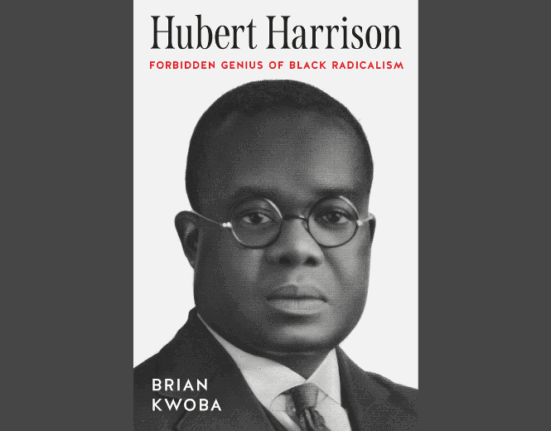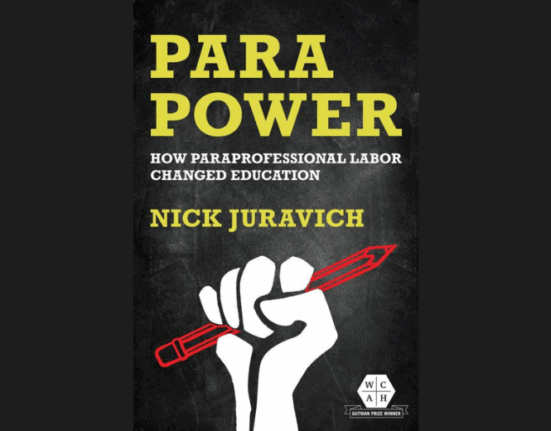Fighting Toxic Ignorance: Origins of the Right to Know about Workplace Health Hazards (Cornell University Press) examines the rise of a sustained social movement for workers’ right to know about workplace health hazards. Author Alan Derickson argues that the emergence of this movement in the 1970s was the culmination of long-recurrent conflicts over the need for workplace hazard warnings. As part of our ongoing series of interviews with authors of books on labor and working-class history, Patrick Dixon spoke with Derickson about his new book.
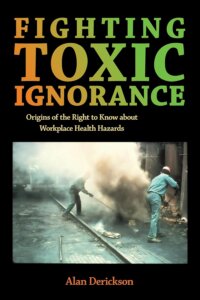
A theme that runs consistently through Fighting Toxic Ignorance is the question of who knew how much about the dangers inherent in specific workplaces. On the one hand, you cite cases of factory level managers who do not seem to fully understand the nature of various risks. On the other hand, there are many workers who do not comprehend English well and have not received any clear instructions from their employers. Yet they clearly know something isn’t right because the turnover rates are very high at certain facilities that are, not coincidentally, often avoided by native-born workers. Did this sort of paradox present a challenge to you as you were researching and writing this book?
There were two intertwined challenges in this exploration of the historical sociology of knowledge. First, the book is not a monograph. It covers many hazards in many industries across the country over the course of three-quarters of a century. Hence, the knowledge held by workers and managers inevitably varied considerably within and between the classes. Second, as a practical research issue, it is always difficult or often impossible to determine with any certainty what information at-risk rank-and-file workers received and from what source in the past, how they turned that information into knowledge, and what they did with that knowledge, especially when we are examining lived experience decades ago.
Consider a plausible continuum of knowledgeability. At one end of the continuum might well be a newly arrived non-English-speaking international migrant with no prior industrial work experience walking into a factory that produced lead paint back at the turn of the twentieth century. There would be no labels on containers of materials, no warning signs posted, no safety training program. Yet even such a precariously positioned vulnerable laborer might get informal warnings from coworkers, messages that might induce that person to seek other employment. But high turnover also meant fewer long-term veterans around to dispense information to newcomers. As I argue, professional and administrative people of conscience often intervened to combat that prevailing ignorance. Allies like physician Alice Hamilton (the first woman ever appointed to the Harvard faculty, forbidden to sit on the dais with the rest of her colleagues at commencement), from the Progressive Era onward played in pivotal role in fighting to expand workers’ knowledge. But until the 1960s, these middle-class advocates of greater transparency were generally scarce.
At the other end of the knowledge spectrum might be the medical director of a major corporation. That individual would have access to scientific and technical literature, opportunities to attend professional meetings, a network of colleagues from whom to gather facts about hazards like lead poisoning, and clinical data from their own examinations conducted on the workforce. But the person in charge of occupational health could also be only a part-time contractor brought in to do occasional employee medical exams and to help fend off workers’ comp claims. So there was not only a wide spectrum of knowledge and ignorance but also variations among those in different class locations.
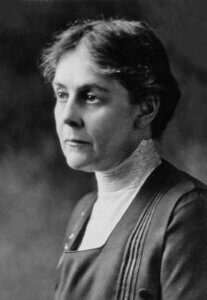
The industrialists that appear in your book manage to concoct all manner of explanations for why workers themselves were responsible for their own suffering at the hands of toxic chemicals. Particularly memorable was the charge that those hurt had neglected to trim their beards and mustaches with sufficient regularity. Nonetheless they are often operating under the weight of many different forms of racial and ethnic prejudice, and for many years in an era of ascendant Social Darwinism. Should we treat these in any way as good faith arguments or is it fair to conclude that in the great majority of cases industry groups like the Manufacturing Chemists’ Association knew very well of the extreme risks that were inherent in the use of their products?
Some in the management ranks undoubtedly did believe that employees’ flawed behavior, not exposure to toxic chemicals, caused their ailments. In an individualistic culture, this would be a natural reflexive response. Racial and ethnic prejudices often made such rationalizations a first resort. Other managers self-servingly believed that dangerous substances caused problems only because their subordinates mishandled them. Here again, the supposed stupidity of immigrants and workers of color made this a handy victim-blaming excuse.
Another group within management recognized that there was a certain amount of occupational disease stemming from factors beyond workers’ influence, but chose to minimize or ignore problems out of simple financial expediency. A common defense was to concede the existence of cases of illness or even fatalities but to contend that these were victims of earlier conditions that had subsequently been improved. Only supposedly solved problems could be acknowledged. From any of these perspectives, distributing meaningful hazard warnings became a measure mainly to limit liability in lawsuits. Whether chemical firms belonging to the MCA “knew very well of the extreme risks” or not isn’t entirely clear. What seems to have been a common understanding in the midcentury interval was that problems existed that were significant enough to potentially generate lawsuits or workers’ compensation claims.
At both the state and national levels, the public-health and medical establishments enjoyed cozy relationships with employers. Both the US Public Health Service and state health bureaucrats wanted access to workplace research sites. To ensure that access, the overt policy was to withhold their findings from the workers.
Advocates for workers’ right to know about toxic chemicals struggled for decades with a focus on state-level action. You write that it’s really not until the late 1960s that their focus shifted in favor of federal action. Though they’re successful in winning the Occupational Safety and Health Act in 1970, if you were going to introduce an ambitious and progressive new federal program, sometime between the years 1933 and 1968 before the New Deal Coalition really started to unravel would have seemed optimal. Did this represent a historic and strategic error or was the political influence wielded by industry simply too powerful and pervasive throughout the period?
There was, in fact, a progressive initiative for a promising federal program early in the New Deal. In 1934, the Roosevelt administration created a Division of Labor Standards (DLS) within the Department of Labor, modeled on a long-standing program in New York State. The new division aimed to help labor departments in the states deal with occupational disease, but also had the potential to be the base for broader federal intervention in the regulation of working conditions. This threat led immediately to a decisive, effective counterattack. A toxic provision in the Social Security Act offered grants to state health departments, but not state labor agencies, to establish or bolster efforts to prevent occupational disease. The state-level labor occupational health offices with which the Division of Labor Standards planned to coordinate withered, and most disappeared as the states chased the money from Washington. Any chance for expanding federal involvement and moving national policy in a progressive direction was lost.
At both the state and national levels, the public-health and medical establishments enjoyed cozy relationships with employers. Both the US Public Health Service and state health bureaucrats wanted access to workplace research sites. To ensure that access, the overt policy was to withhold their findings from the workers participating in their studies and from any unions representing those workers. Shortly after World War II, the defeated DLS fell prey to the conservative campaign that also brought the Taft-Hartley Act, the rejection of Truman’s plan for national health insurance, and other setbacks.
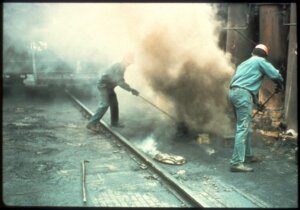
The Right to Know activists ultimately achieve some significant level of success. Warning signs are widespread, protective equipment is common and often used where appropriate, and it seems a lot harder to conceal the presence of toxic substances in workspaces. Yet chemical accidents and injuries still occur in the US with a disturbing level of frequency. Should we still treat these accomplishments as a foundational step in advancing workers’ rights in the US?
Unfortunate and sometimes disastrous incidents involving toxic chemicals do continue to occur not infrequently for several familiar reasons. These include the decline of unionism, the weakness of government regulatory activity, and employers’ increased reliance on outside contractors, temps, and others unfamiliar with particular workplaces. Notwithstanding these disturbing occurrences, it should not be forgotten that even for the period of my study, covering only the prehistory of the real national social movement that emerged in the late 1970s, activists certainly did bring about advances that have contributed and that continue to contribute to reducing the probability of such miserable events today. For example, a number of the first OSHA health standards incorporated right-to-know provisions, entitling workers to see the results of their company-administered medical examinations and to see some data on hazards to which they were exposed. Standards also mandated both the posting of meaningful warning signs in hazardous work areas and the placement of warning labels on containers of toxic substances.
Measuring the full impact of those breakthroughs is difficult, but by the 1970s it was estimated that occupational disease was killing up to 100,000 workers and former workers per year. For a problem of that enormity, any serious reforms that significantly curtailed the carnage by alerting workers to often-invisible dangers was important. These accomplishments were not only worthwhile in themselves, but also served to help establish the right to know as a fundamental principle for the subsequent cohort of occupational health activists, who made larger gains in democratizing access to information in the 1980s. The focus on knowledge as a matter of rightful entitlement also offered a durable and compelling framing device in broader public discourse. In particular, it helped to forge connections with environmentalists concerned with rights to know about community hazards. In an ironically unfortunate sense, the right-to-know gains may have been foundational: with the all-too-common absence of governmental and union forces to eradicate or at least minimize life-threatening hazards, the basic ameliorative principle in place was only the right to be given some alert to the risks lurking in the workplace.
The union proceeded from the premise that knowledge is not power, but rather a resource for gaining power.
Of course, what activists and their supporters really wanted and still want is a robust right to act to eliminate hazards. The case of the Clairton Works of US Steel near Pittsburgh is instructive. In 1969, through various creative and strenuous exertions the Clairton Steelworkers local managed to get state health investigators to release a report that had found astronomical levels of carcinogenic emissions from the ovens of the world’s largest coking, that is, coal cooking, operation at the steel mill. Jobs in the coke-oven department were so undesirable that management maintained a policy of sending virtually only African American men to that unit. The local used the damning information it gained to mobilize the rank and file to press for and win major gains in hazard controls in the next round of contract negotiations with US Steel and to force OSHA to promulgate a strong standard for curbing emissions. That standard not only called for stricter containment of emissions but also required warning signs that finally carried the unpleasant word “cancer.” The union proceeded from the premise that knowledge is not power, but rather a resource for gaining power.
Author
-
Patrick Dixon is a Research Analyst at the Kalmanovitz Initiative for Labor and the Working Poor at Georgetown University and the Managing Editor of Labor: Studies in Working-Class History. He is the author of Nuggets of Gold: Further Processed Chicken and the Making of the American Diet (University of Georgia Press, 2024)



